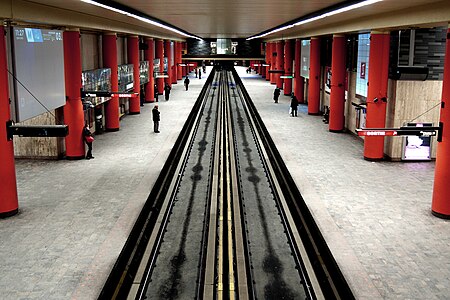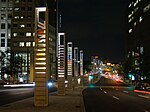McGill station
Downtown MontrealGreen Line (Montreal Metro)Railway stations in Canada at university and college campusesRailway stations in Canada opened in 1966Réseau express métropolitain railway stations

McGill station is a Montreal Metro station in the borough of Ville-Marie in Montreal, Quebec, Canada. It is operated by the Société de transport de Montréal (STM) and serves the Green Line. The station opened on October 14, 1966, as part of the original network of the Metro. It is currently the second busiest station (after Berri-UQAM station) in the network measured by number of passengers entering the system. Prior to 2002, it was the busiest station in the network.
Excerpt from the Wikipedia article McGill station (License: CC BY-SA 3.0, Authors, Images).McGill station
Boulevard De Maisonneuve Ouest, Montreal Ville-Marie
Geographical coordinates (GPS) Address Nearby Places Show on map
Geographical coordinates (GPS)
| Latitude | Longitude |
|---|---|
| N 45.503888888889 ° | E -73.571666666667 ° |
Address
Boulevard De Maisonneuve Ouest 650
H3A 2A6 Montreal, Ville-Marie
Quebec, Canada
Open on Google Maps









